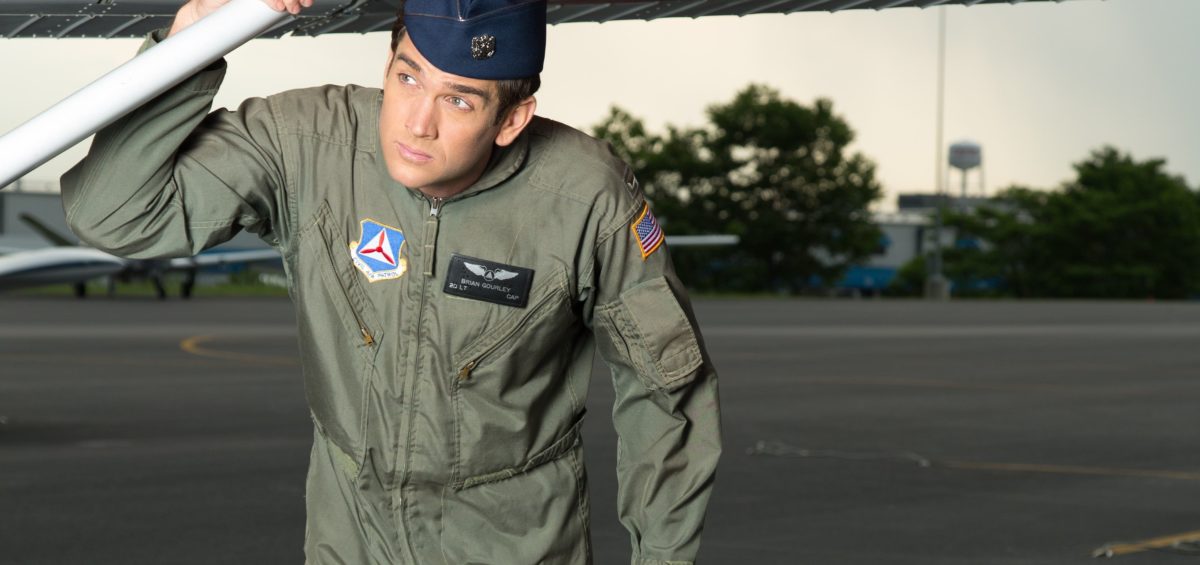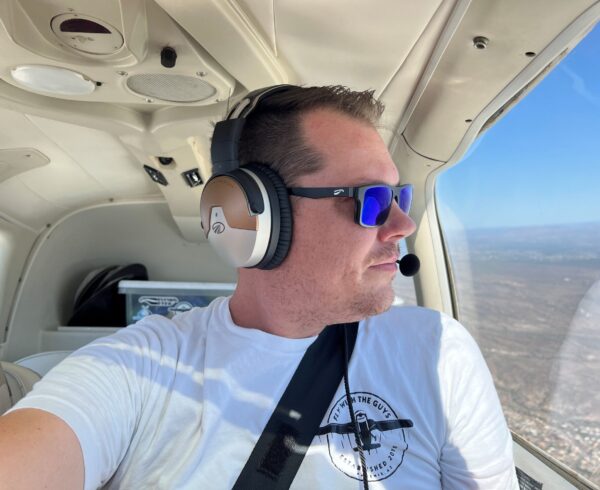Like many kids, James Hutches fell in love with airplanes. A frequent flyer for family vacations and holidays, he loved the view of the world from the sky and the sense of freedom he felt on a plane. However, unlike most kids, he began living his dream at age 13, thanks to the cadet program of the Civil Air Patrol (CAP). This civilian partner of the U.S. Air Force launched Hutches on a career in and around aviation and a lifetime of service, whether he’s managing search-and-rescue missions, doing aerial reconnaissance, or helping welcome others to the aviation dream.
As a kid, Hutches lived in Shreveport, Louisiana, next to Barksdale Air Force Base, so he got to watch aircraft in action all day long. At 13, he got his hands on a copy of Plane and Pilot magazine. When he saw an article about CAP headlined “Learn to Fly for Free,” he talked his dad into taking him to meetings, and promptly “got the uniform, started flight training, and dove into aerospace education.” He first soloed at 16 years old, and then began to assist with search-and-rescue missions.

Hutches calls CAP “the Air Force’s best kept secret.” It was founded in 1941, in the earliest days of World War II, when citizen pilots were strapping bombs to their Piper Cubs and sinking German U-boats. Over almost 80 years, as an Auxiliary of the U.S. Air Force, CAP has grown to 60,000 members who handle emergency service missions, aid in homeland security, promote aviation and related fields through aerospace/STEM education, and help shape future leaders through CAP’s cadet program.
Hutches graduated from college in 2002 with a teaching degree in general science. But aviation called and, instead of teaching, he went to work at a local airport, working in airport management, fueling aircraft, and working at a flight school. He finished his private pilot’s license, worked as a dispatcher, and put his teaching skills to use helping students with their studies. Over the years, Hutches also became a ham radio operator and amateur meteorologist. “I was into storm chasing and tornadoes, and I did more self-study than I should have,” he admits. After moving to Eugene, Oregon, to manage an airport expansion there, he became a CAP squadron commander. He’s proud that his squadron sent three cadets to the U.S. Air Force Academy, including a young woman who started the Academy at age 16. After Eugene, Hutches was promoted to station supervisor in Jackson Hole, Wyoming, where he was introduced to mountain flying in extreme weather—daunting conditions but thrilling to his inner meteorologist.
Since moving to Salem, Oregon in 2009, Hutches has been active in the local CAP squadron, where half his work is on the ground, planning and managing rescue missions, briefing pilots, and planning for communications (which, in remote areas, may involve sending an additional plane aloft to act as a radio relay). The other half of his work is on air crews, as a mission observer (co-pilot, radio operator, GPS programmer, and contact with grown control) or as a mission observer, the person who scans for lost people or planes and who does aerial photography. During the recent Oregon wildfires, the Salem squadron did aerial reconnaissance, flying over remote radio towers, dams, and other critical infrastructure to see what had been destroyed and sending 2,500 photographs back to FEMA and Oregon’s Emergency Management agency. Other types of missions involve CAP being a “voice from the sky,” with plane-mounted speakers to warn people on Oregon’s remote beaches of incoming tsunamis and call out for people who are lost. He recalls a mission where searchers on the ground hadn’t been able to find a lost child. “But we got a recording of her grandmother telling her to come out. When she heard that, she knew that it was safe, and we were able to find her and get her home.”

Hutches says CAP is a great place for pilots, but it’s more than that: it’s for anyone who is interested in serving and has a volunteer spirit. “If they’re not a pilot or they’re a low-time pilot, they’ll be perfect in the right-hand seat. We can use people that love radio, photography, logistics, or emergency services.” CAP welcomes young and older members, and Hutches’ squadron is about 50/50 women and men. He says many women who started in CAP are now Air Force pilots, and one is an aerial demonstration pilot with the Thunderbirds.
Hutches says, “If you’re curious, visit a local squadron. Find out if you’re a fit for CAP and they’re a fit for you. It’s not all glamorous, but you might find your passion. There’s something for everyone in CAP to have a meaningful experience.”















Great article. I’m in a composite squadron in South Florida, and, while I’m not a pilot, I was able to get my Airborne Photographer ticket. I wish I had known about CAP in my youth.